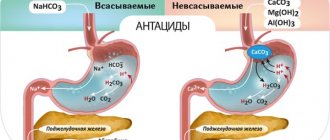A complex drug based on calcium salt helps restore metabolism and prevent the development of many pathologies. Affordable and effective, it restores the normal level of one of the main macroelements in the body, relieving a variety of painful symptoms.
Composition and dosage form
Calcium chloride (CaCl2) is formed during the production of baking soda. The substance is used not only in medicine, but also in cooking, cosmetology, and the chemical industry. Without it, it is impossible to produce healthy calcined cottage cheese and hard cheeses.
The pharmaceutical form of calcium chloride is a water-based injection solution. Available in transparent glass ampoules of 5 or 10 ml. The cardboard packaging of the drug contains 10 such ampoules. The concentration of the medicinal compound in 1 ml of solution is 100 mg.
Physical and chemical properties of the product
Calcium chloride has other names: calcium chloride, calcium chloride nitrate, E509. Molecular formula of the substance: CaCl2.
Content:
- Physical and chemical properties of the product
- Use of the substance in the food industry
- Application in other areas
- Beneficial and harmful properties of the E509 additive
- Instead of conclusions
This food additive is presented in the form of crystal-shaped granules, often white, less often completely transparent. The substance has high moisture absorption and is highly soluble in alcoholic liquids and water. Resistant to high temperatures. The melting point of calcium chloride is seven hundred and seventy-two degrees Celsius, and it boils at a temperature of 1935 degrees Celsius. At the same time, an aqueous solution of the substance crystallizes at temperatures below twenty degrees Celsius.
This food additive is obtained during the production of soda, namely through the recovery of ammonia.
How does calcium chloride work?
The product exhibits anti-inflammatory, anti-allergic, detoxifying properties, stabilizes the blood formula, helps strengthen vascular walls, and reduces their permeability. Calcium in the drug ensures normal functioning of the muscles and heart, regulates the conduction of nerve impulses, bone tissue synthesis, increases resistance to infections, participates in the absorption of vitamins and minerals, and maintains the necessary balance of electrolytes. Calcium chloride also normalizes the condition of the kidneys, somewhat increases diuresis, relieves and prevents swelling, helps restore the functioning of the adrenal glands, and promotes the release of adrenaline.
After use, about half the dose of the drug binds to blood proteins. Part of it is absorbed by the body. The transformation of calcium chloride occurs in the liver, the excess is excreted in the intestinal contents and urine. The intensity of excretion and absorption of the drug depends on age-related changes, dietary habits, the presence of calcium-containing foods in the diet, and hormonal status.
Use of the substance in the food industry
On the territory of the Russian Federation, the use of this substance is not prohibited, but is strictly controlled by law. The European Union also considers calcium chloride a fairly safe product and it is legally used in the medical and food industries.
As a food additive, calcium chloride is included in a wide variety of food products to stabilize some of their properties, and also as an emulsifier and preservative. Most often it can be found in dairy and fermented milk products, especially in dry cream and pasteurized milk. But it is also found in cottage cheese and various types of cheeses.
Other products in the manufacture of which calcium chloride is used include: caviar, canned vegetables and fruits, various jellies and marmalades, condensed milk, dry mashed potatoes, chocolate and beer.
This substance is used in the food industry for the following processes:
- When pasteurizing cream, adding calcium chloride to it significantly reduces the acidity, which facilitates the process of making butter.
- It is indispensable as a thickening component in the production of milk powder. The fact is that calcium ions help better adhesion of proteins to each other. This substance allows you to normalize the coagulation process of dairy products during pasteurization and improves the formation of the curd. Adding it to milk increases its final yield and leads to a significant improvement in quality.
- An additive marked E509 acts as a stabilizer in the production of chocolate, preventing it from hardening.
- When making cottage cheese, calcium chloride helps milk coagulate better.
- When making marmalade, calcium chloride also acts as a stabilizer.
- This substance prevents the softening of vegetables and fruits during the preservation process, and also normalizes the taste, bringing it to the desired salting level.
- In the production of beer and soft drinks, this product is used to reduce water hardness and improve its performance, as well as to regulate acidity.
Indications for use
It is recommended to use a 10% solution of the drug:
- with calcium deficiency caused by malnutrition, systemic diseases, endocrine disorders, intestinal disorders;
- when there is a need for increased doses of calcium: age-related changes, periods of active growth, postpartum complications, general physical exhaustion;
- for bleeding of various origins;
- with nutritional edema;
- for hepatitis;
- with rickets, osteomalacia;
- for tuberculosis;
- for kidney inflammation;
- for allergic reactions;
- in case of intoxication with fluorine, magnesium, oxalic acid preparations.
During childbirth, calcium chloride is necessary to prevent eclampsia and to stimulate contractile activity of the uterus.
Beneficial and harmful properties of the E509 additive
No matter how safe a substance is, it must be consumed in acceptable dosages. The daily norm for an adult is 350 mg of calcium chloride. And this dose is considered absolutely harmless and safe.
Negative and unpleasant consequences can arise when the permissible dosages are increased. Consumption of this emulsifier in large quantities causes irritation of the digestive organs; in the most serious situations, this can lead to the development of gastric ulcers.
However, the beneficial properties of this substance significantly exceed the possible harm. These include:
- assistance in the formation of bone tissue;
- compensation of calcium in the human body, which has a positive effect on the nervous system and contraction of muscle tissue;
- regulation of blood clotting;
- helps to increase the body's natural defenses and its resistance to various infectious diseases;
- positive effect on the heart muscle;
- preventing the emergence and development of inflammatory processes.
In addition, calcium chloride is often used for weak labor and liver diseases such as hepatitis or toxic liver damage. It is often used for skin diseases: psoriasis, eczema. Calcium chloride is used for inflammation caused by endometritis, as well as for severe allergic reaction of Quincke's edema.
In pediatric practice, calcium chloride is often used to relieve symptoms of various allergic reactions caused by the consumption of allergenic foods or medications. It is also prescribed to children after vaccinations to relieve unpleasant symptoms.
When is calcium chloride contraindicated?
The injection drug should not be used in cases of increased blood clotting, thrombosis, vascular atherosclerosis, or in conditions of hypercalcemia. Pregnancy and breastfeeding are also contraindications. An exception may be an individual indication when the benefit to the mother outweighs the risks to the child.
It is necessary to refuse therapy if you have an allergic reaction. Its possible signs: increased swelling, severe skin itching following administration, bronchospasm, suffocation.
Side effects
When an injection is administered, the following body reactions are likely:
- burning pain along the veins;
- redness of the skin of the face, a feeling of heat in the mouth, face, neck and throughout the body;
- decreased heart rate, arrhythmia;
- pain in the stomach, abdominal cavity;
- nausea, vomiting.
Within 20–30 minutes after the medicine enters the bloodstream, the discomfort weakens and passes. If the injection is administered too quickly, cardiac problems may occur.
Instead of conclusions
Calcium chloride is a chemical substance that has such beneficial properties that it is widely used in medicine and in food products. Products prepared using such a food emulsifier are marked with the E509 mark. In medicine, calcium chloride has proven itself remarkably as a panacea for various pathologies. In addition, its valuable qualities are successfully used in other areas of industry. However, it is worth remembering that although this substance is harmless, it must be used in strictly regulated dosages in order to avoid unnecessary unpleasant consequences.
More fresh and relevant information about health on our Telegram channel. Subscribe: https://t.me/foodandhealthru
We will be grateful if you use the buttons:
How to use calcium chloride according to instructions
In most cases, calcium chloride injections are prescribed by infusion: through droppers, at a rate of no more than 6 drops per minute. This way the drug causes fewer painful side effects. Jet injection is practiced less frequently. Intravenous injections are given slowly: administering the dose over 3–5 minutes. Subcutaneous and intramuscular injections of the drug are prohibited. The product does not dissolve in soft tissues, forming compactions and foci of necrosis.
The daily dose depends on the age and physical condition of the patients:
- For adults, the drug is administered in a volume of 5–10 ml per day;
- Children are dosed from 0.5 to 4–5 ml.
It is allowed to divide the daily dose into several parts and administer them at equal time intervals. In emergency cases, it is allowed to take calcium solution orally: consume the contents of the ampoules orally:
- for children and adolescents, the maximum dose is about 5 ml of the drug at a concentration of 10%;
- Adults can drink about 10–15 ml of the product per day.
The exact scheme, as well as the duration of the course of therapy, is determined individually.
Description of the drug
Calcium is necessary for the proper functioning of the neural network, contraction and relaxation of skeletal as well as smooth muscles and myocardial activity. As a component of bone tissue, it must be maintained in proper concentration in the body. In addition, it directly affects the rate of blood clotting and the permeability of capillaries and small vessels.
Calcium chloride is a food additive E509.
Most often, calcium chloride is produced in the form of an aqueous solution in ampoules for injection, and is also sometimes found in the form of powder for the preparation of solutions. Powders for food use are also available for sale. The additive is used, among other things, to combat oily skin, using the drug as a chemical peeling.
Calcium chloride in cosmetics
The drug solution is popular as part of masks for deep cleansing of facial skin. You can use them at home:
- Apply the contents of the ampoule with a cotton swab to clean skin, repeat the procedure several times after each layer has dried;
- wash your hands with solid, fragrance-free toilet soap and apply foam to your face;
- rub the soap over the skin until characteristic pellets appear under the palms;
- Continue massaging until the entire mass is peeled off the skin.
This “rolling” removes dead particles of the epidermis, dissolves remaining sebum, softens and eliminates various imperfections, and narrows pores. Regular use normalizes sebum secretion and eliminates inflammatory processes. The mask is especially useful for dull, oily and problematic skin.
Application in other areas
Due to its beneficial qualities, calcium chloride is widely used in various areas of life. This is a popular product in the medical and pharmaceutical industries; it is often included in various medications aimed at improving blood clotting, as well as antihistamines.
Food emulsifier E509 is used for the following processes:
- production of latex goods and rubber products;
- for the production of lactic acid;
- in the production of glue;
- for the production of rubber products;
- when laying asphalt, improving its adhesion;
- used as an anti-dust and de-icing agent;
- in preparation for gas transportation;
- in the production of calcium metal;
- when the dew point decreases and gas drying occurs at gas distribution stations and autogas filling compressor units.






